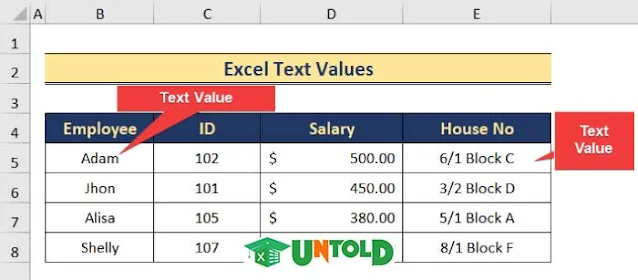Changing the value in an old-fashioned paper-based worksheet was laborious as it required tedious manual recalculation. Electronic spreadsheets have come a long way to ease the difficulties. In MS Excel, a worksheet is essentially a worksheet that has been divided into rows and columns to store information about company inventories, revenue, expenses, debts, and credits. We can efficiently rewrite, change, and update the worksheet. You can modify the value stored in a spreadsheet cell. With that note, we will discuss what a spreadsheet in MS Excel is in this article.
Download Practice Workbook
What Is an MS Excel Spreadsheet Made Up Of?
Rows, columns, and the intersections of those three, along with cells, make up an MS Excel spreadsheet. A, B, C, D, and other letters are frequently used to denote columns, while numbers are frequently used to denote rows (1, 2, 3, and so on). A cell in a Microsoft Excel spreadsheet is created by the intersection of a column and a row.
What Is an MS Excel Spreadsheet Column?
A column in a Microsoft Excel spreadsheet is a vertical space that runs the length of the spreadsheet from top to bottom. This spreadsheet’s highlighted section is a column with the letter B as its label.
What Is an MS Excel Spreadsheet Row?
The row in a Microsoft Excel spreadsheet is the horizontal column that runs the width of the spreadsheet. Here, we will show the which has the number 5 as its label.
What Is MS Excel Spreadsheet Cell?
A cell is the intersection of a column and a row in a Microsoft Excel spreadsheet. Each cell has a unique address that includes the column letter and row number. Keep in mind that in a cell’s address, the column letter will come first and the row number will come second. An Excel 2019 worksheet contains of more than 17 billion cells. Here, we will show the D5 cell.
Read More: Understanding Excel Spreadsheets (29 Aspects)
Last Cell in an MS Excel Spreadsheet
In an Excel 2019 worksheet, column letters range from A to XFD, a total of 16,384 columns, and row numbers range from 1 to 10, 48,576. The last cell address is then XFD1048576 in an Excel worksheet. Here, we will go to the last cell of the Excel worksheet to demonstrate it.
Data Types You Can Store in Cells?
A modern spreadsheet contains a plethora of cells. A Microsoft Excel 2019 worksheet holds more than 17 billion cells. A cell can have three basic types of data:
A Numeric Value
A numerical value can take the form of a formatted number, a date, an hour, or a scientific number. Numerical values include times and dates, such as 3:24 a.m. on February 26, 2022.
A Text Value
Texts may serve as column headings, value labels, or instructions for a spreadsheet. Excel regards the text that contains numbers or that begins with numbers as text as well. For instance, the text includes both “6/1 Block C” and “Block C, 6/1.”
A Formula
Formulas are what make a spreadsheet a spreadsheet. Excel will display the formula’s output in the cell where you enter it. We can use simple mathematical expressions in formulas, or the formulas can make use of some of the robust functions that Excel comes with. The following is a demonstration of the AVERAGE function which calculates the average of the specified numbers.
Read More: Basic Terminologies of Microsoft Excel
Conclusion
In this article, we have given a basic introduction to the Excel spreadsheet. We have also covered the main parts of an Excel worksheet. This will help the new users to have a proper understanding of Excel spreadsheets and use them to their advantage.









No comments:
Post a Comment